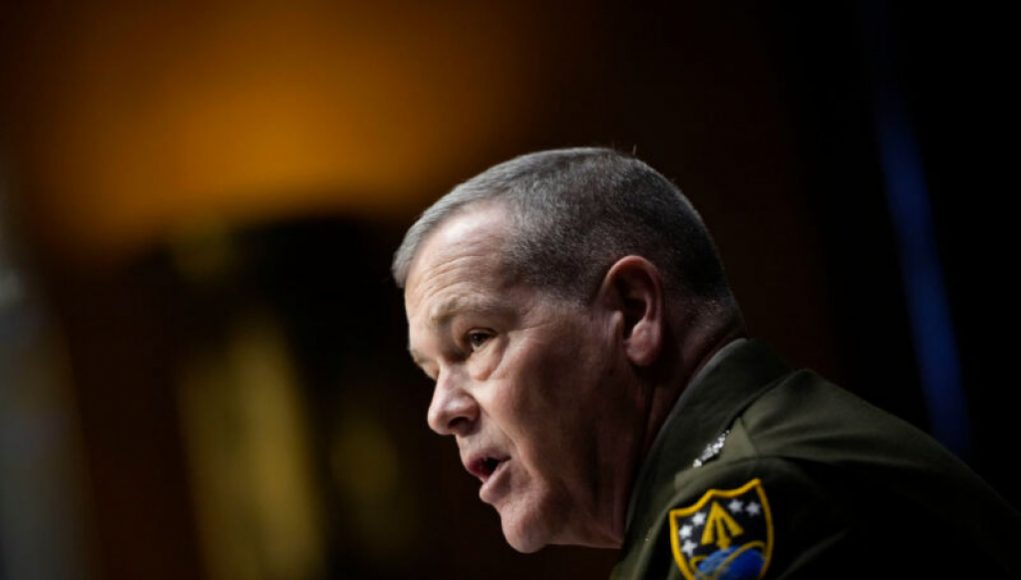The leader of the United States Space Command, Army general James H. Dickinson, made an intriguing statement on Wednesday. He highlighted the crucial role played by megaconstellations like SpaceX’s Starlink network in Ukraine’s efforts to deter a potential invasion by Russia.
Dickinson emphasized the significance of megaconstellations, stating, “We are seeing for the first time what a megaconstellation means to the world. That provides such resiliency and redundancy in terms of maintaining satellite communications in this example. That is powerful, and the department is moving in that direction.”
These remarks were made by Dickinson at the Aspen Security Forum. As the leader of the Space Command, he holds responsibility for the command and control of all US military forces in outer space. Dickinson praised Starlink for facilitating communications among Ukraine’s armed forces, and he also acknowledged the essential observation services provided by other commercial companies through technologies like synthetic aperture radar.
Distributed the risk
Dickinson further explained that having a constellation of distributed satellites makes it more challenging for Russia to take countermeasures. He stated, “Having a megaconstellation, quite frankly, frustrates our adversaries because you don’t know how many satellites it would take to have any kind of degradation to that architecture, or which one if you had to pick one, you would have to, you know, have an effect against.”
Last October, Konstantin Vorontsov, a deputy director in Russia’s foreign ministry, expressed concern about the use of Western commercial satellites by Ukraine, calling it “an extremely dangerous trend.” While Vorontsov did not specifically mention any satellites, it is highly likely that he was referring to SpaceX’s Starlink satellite constellation, which Ukrainian soldiers have been using for communications and tracking Russian troop movements.
Vorontsov argued that the use of civilian satellites for wartime purposes makes them military targets. When asked how Space Command would respond to an attack on a US commercial satellite by a foreign adversary, Dickinson avoided giving a direct answer, stating that such decisions would have to come from higher authorities.
Advertisement
“I do have a mission area protecting and defending, and that’s widely known, assets on orbit,” he replied. “But to be honest with you, those have to be directed to me by, you know, my boss, and my boss’s boss, eventually if that were to happen.”
Since its reestablishment in 2019, US Space Command has been tracking an increasing number of objects in space, reaching close to 50,000. This growth is partly due to the rising number of satellites and activities like Russia’s anti-satellite test in 2021.
Striking a balance
Dickinson acknowledged that some of this growth is attributed to new objects identified and tracked by commercial providers. Currently, Space Command collaborates with 133 commercial space companies, which contribute to various functions such as satellite communications and space domain awareness. These partnerships have proven to enhance the capabilities of the US Department of Defense.
However, the increasing reliance on commercial companies raises concerns about potential conflicts of interest. What if a company decides to withdraw its products from military use? Dickinson emphasized the need for balance, stating, “It’s a balance. In other words, we’re not going to be all commercial. We may not be all military. But as we look at our mission areas within US Space Command and the Department of Defense, there is a balance between what is purely military and what might be relied upon as a service.”
Dickinson acknowledged that the US military already heavily relies on commercial services in other domains, such as shipping at sea and using commercial aircraft for troop deployments. However, the extent to which the military relies on commercial services in space is still being determined, as space is a relatively new domain.
In the face of the ever-growing Ukraine crisis, the US military has been taking steps to bolster their communications infrastructure. Recently, they have established new partnerships with a range of Megaconstellations, focusing on enhanced resilience after the crisis’s acute disruptions.
These Megaconstellations, including companies such as SpaceX, OneWeb, and Amazon, will provide the US military with a spectrum of military-grade satellites that will help ensure the continuity of military communications and logistical operations. Furthermore, many of these satellite arrays implement encryption protocols to safeguard sensitive military signals from detection or manipulation.
This embracing of Megaconstellations comes at a critical point in which US combat operations require a more robust communications structure to maintain strategic control of the region, particularly in the face of hostile environments. The new constellation of satellites will be more resistant to external influences and will be able to deliver faster and more secure communications over a much wider area than was previously possible.
At the same time, the US military will be able to leverage the enhanced capabilities of the Megaconstellations to increase situational awareness of potential cyber and physical attacks. This kind of intelligence will be essential in mapping out effective defense strategies that counter the disruptive effects of any further conflict.
To further improve the US military’s communications capabilities, the Missile Defense Agency has also announced its intention to develop a Laser Interconnect Network that is expected to rapidly and securely link multiple satellites and secure a tactical alliance between all US military commands.
All of these measures will not only make US commanders more confident about their reach and control in the field, but will also ensure that military operations will not be hindered in the event of any further disturbance in the region. By investing heavily in new Megaconstellations and developing enhanced defensive strategies, the US military will be well-prepared and resilient when it comes to facing any future challenges.




















